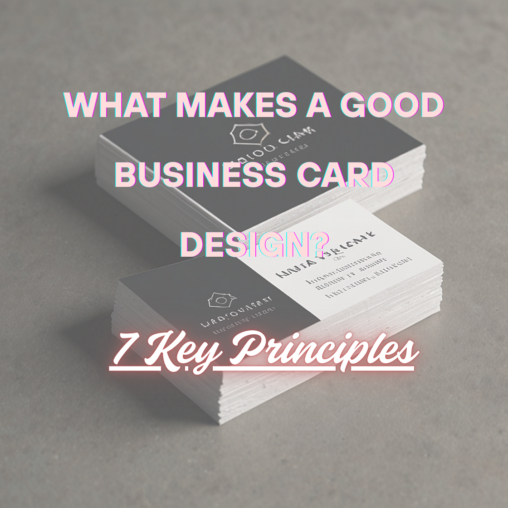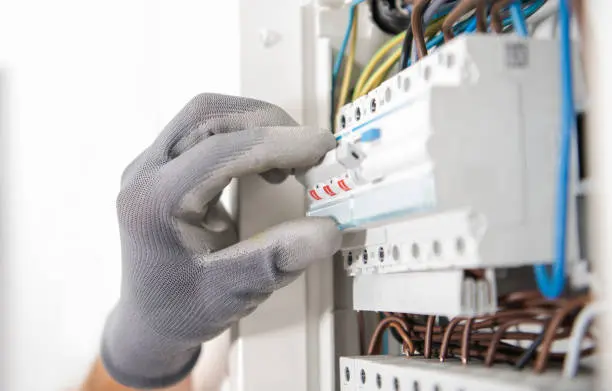A good business card design can be the difference between being remembered or forgotten after a networking event. Despite their small size, business cards carry significant weight in creating first impressions and establishing professional credibility. Many struggle with balancing creativity and professionalism when designing these crucial marketing tools. This guide outlines the 7 key principles that will help you create an effective business card that represents your brand perfectly.
1. Prioritize Readability Over Style
Simple Fonts and Clear Hierarchy
While it’s tempting to use decorative fonts to stand out, readability should always come first. Choose 1-2 professional fonts that align with your brand identity, and create a clear visual hierarchy that guides the reader’s eye to the most important information.
Your name should typically be the most prominent element (16-18pt), followed by your title (11-14pt), and contact details (8-10pt). Ensure sufficient contrast between text and background—dark text on light backgrounds or vice versa works best for maximum legibility.
2. Choose the Right Layout
Space, Balance, and Flow
A clean business card design gives information room to breathe. Aim for at least 5mm margins around all edges to prevent important details from being cut during printing. Remember that white space isn’t empty space—it’s a purposeful design element that enhances readability and creates balance.
Arrange information in a logical flow that follows natural reading patterns (top to bottom, left to right in Western cultures). Group related information together, such as contact details, to make the card easier to scan quickly.
3. Reflect Your Brand Identity
Colors, Logo, and Typography Consistency
Your business card should be an extension of your existing brand identity. Use your established color palette—typically no more than 2-3 colors plus black or white. Your logo should be prominently featured but appropriately sized.
Consistency in visual elements creates recognition and reinforces your brand image. If you use a specific typeface in your logo or website, consider incorporating it into your card design for a cohesive look across all touchpoints.
4. Use High-Quality Materials
The Feel of Quality Matters
The tactile experience of your card speaks volumes about your attention to detail. Standard business cards typically use 300-350 GSM paper, but premium cards often go up to 400-450 GSM for added thickness and durability.
Consider the finish as well: matte cards feel sophisticated and are easy to write on, while glossy finishes make colors pop but can be susceptible to fingerprints. Textured papers like linen or felt add an elegant touch that people notice immediately when handling your card.
5. Keep Only What’s Necessary
Don’t Overstuff the Card
A common mistake is trying to include too much information on a limited space. Focus on the essentials:
- Name and title
- Company name and logo
- Phone number and email
- Website
- One social media handle (if relevant to your industry)
For additional information, consider adding a QR code that links to your digital profile or portfolio—this keeps your design clean while providing access to more details if needed.
6. Consider Print and Finish Options
Spot UV, Foil, Embossing
Special finishes can elevate your business card design from ordinary to extraordinary. Techniques like spot UV coating (a glossy finish applied to specific elements), foil stamping, or embossing create visual and tactile interest that makes your card memorable.
Use these effects strategically—perhaps to highlight your logo or company name—rather than applying them everywhere. The goal is subtle sophistication, not overwhelming flash.
7. Test, Get Feedback, Then Print
Always Proof and Re-check
Before committing to a full print run, produce a few test cards to evaluate. Check that colors appear as expected, text is readable, and all elements are properly aligned. Review for any spelling errors or outdated information.
Seek feedback from colleagues or potential clients on what stands out and what might be improved. Ensure all technical specifications are correct—images should be 300 DPI, and your design should include bleed areas (typically 3mm) to prevent white edges after cutting.
Final Thoughts
An effective business card balances design principles with practical communication needs. When done right, your card becomes a powerful networking tool that recipients want to keep and reference.
Designing a great card goes beyond visuals—it’s about communication. PrintArabia’s Standard Business Card, Textured Business Card, and Conqueror Business Card combine professional design with premium print quality to make your first impression count.




